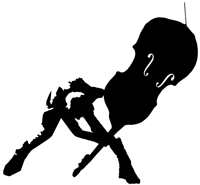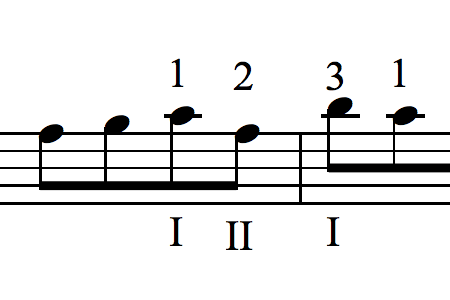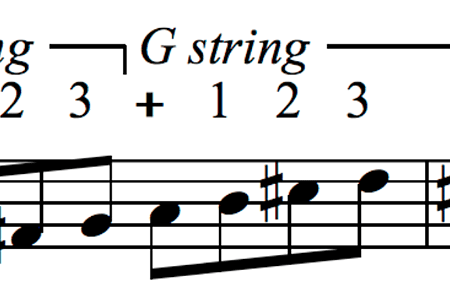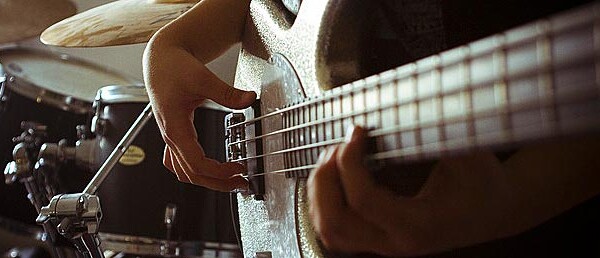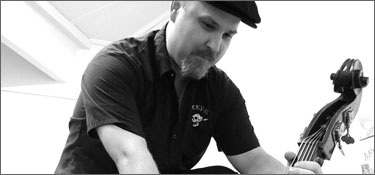Technique Archives - Page 12
More Forked Fingering Techniques: Using the Thumb
Last time we talked about playing fourths across strings using two adjacent fingers, a concept sometimes called “forked fingering.” For example: We can, of course, use the same exact concept in the upper registers of the bass, or thumb position. For example: As mentioned before, this can be easier to execute effectively in the upper registers than in the lower...
Forked Fingering: A Guide to Comfortable Double Stops for Bassists
Playing fourths across strings on the upright bass can be fraught with problems, especially when we are playing double stops. Sometimes it is appropriate to “bar” the notes using the same finger like this: However, this can create a clamping of the hand and needless tension, which in turn limits our facility and ability to adjust quickly. Intonation can also...
Thumb Position: Major Scale Fingering for Bass
There are a multitude of fingerings for any particular scale, and no single fingering is appropriate for every situation. In fact, the most effective fingering for any specific passage will be related to musical issues, not technical ones. Some scale fingerings, however, prove to be useful in a great many situations and are worth having ingrained. Today I want to...
Expanding Your Voice on Bass: Inflections and Articulations
Q: I notice bassists adding what I would call a “slur”, but I think the correct term would be trill at the end of lines and phrases. I really dig the effect, but my hands and mind are not naturally inclined to do this. What would you recommend to help me work on this? A: As with any technique, the...
Bass Technique: Shifting and the Feeling of Lightness
Accurate shifting is extremely important on an upright bass. It may even be the one technique we use the most often. Most other string instruments can play a few two-octave scales without shifting, while we can play a grand total of zero, even if we “pivot.” Despite how often we must execute flawless shift, for many it is a point...
Improving Clarity: Left Hand/Right Hand Coordination
There are several reasons why a passage may sound sloppy. One of the more prevalent ones, however, is incorrect coordination between the two hands during passages of separate (i.e. not slurred) notes. For such passages, the fingers must completely stop the string before the right hand, or bow, articulates. While studying violin pedagogy with Mimi Zweig at Indiana University she...
Left Hand Thumb: Pressure
Note: For Left Hand Thumb positioning, check out the previous installment. When there is excess tension in the hands, the source is often improper use of the thumb and its corresponding muscles. The thumbs of both hands, just like all the fingers, should use minimum effort and pressure to achieve any particular technical goal. Pressure When in standard “neck position”...
Left Hand Thumb: Position
For all instrumentalists, excess tension should be a source of concern. We should work to eliminate it as much as possible. For string players, and especially bassists, excess tension can not only lead to technical and musical inaccuracies, but also to physical discomfort and injury. Sometimes these injuries can be resolved or worked around, other times they cannot. When serious...
Technique Series: Fast Fingers
Although there are musical situations when we want our left hand fingers to strike the fingerboard forcefully, we most often want to use the minimum amount of pressure, and no more. To do otherwise is generally inefficient, clumsy, noisy and speeds up muscle fatigue, among other things. When it comes to left hand technique, the speed of the finger movement...
Technique Series: Pizzicato (Plucking) Exercises
The simple, straightforward exercises below are the best I have seen to develop and maintain right hand pizzicato (plucking) on the upright bass. They isolate the technique to focus one just one thing: your right hand technique. There is certainly room in a practice routine to work on right hand/left hand coordination, or tricky patterns, but these have proven to...
Technique Series: Minimum Finger Pressure
Although there are times when strong muscular exertion in the left hand may be beneficial, in general we want to use a minimal amount of effort. The fingers should press the string with only enough force to produce the note cleanly, and no more. Keeping minimum finger pressure in the left hand will help with speed, stamina, shifting, general ease...
